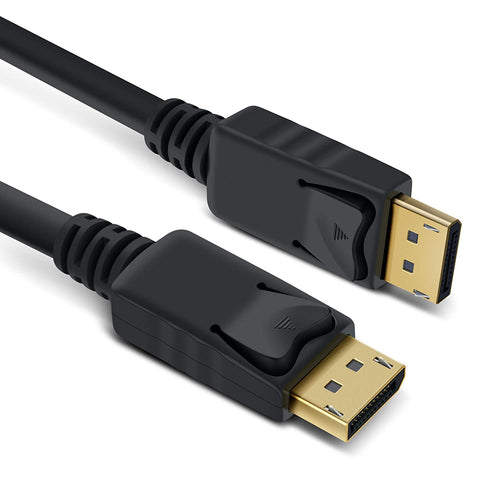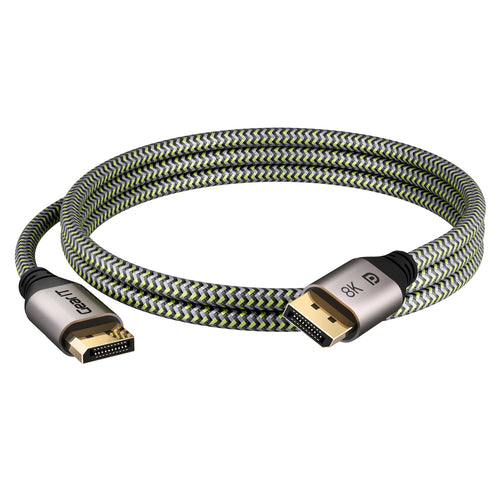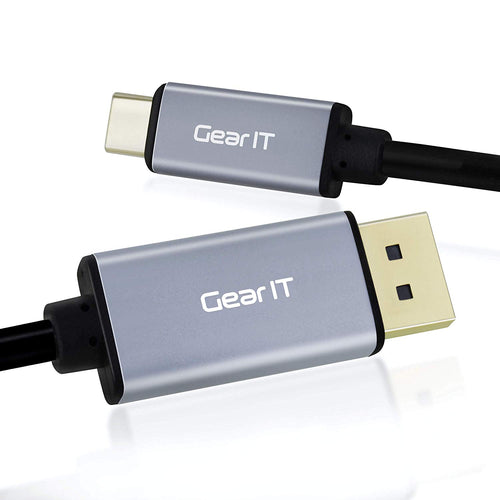DisplayPort 1.4 and 1.4a support high resolutions like 8K at 60Hz and 4K at 144Hz, offering excellent bandwidth and features like HDR support. These versions are ideal for gamers and professionals needing high refresh rates and crystal-clear visuals.
Upgrade your display setup with GearIT’s premium DisplayPort cables:
Get the best visuals and performance—shop GearIT today! 🚀

Today, we’re diving into the world of DisplayPort, specifically the 1.4 and 1.4a standards. Whether you're a gamer, a content creator, or just someone who loves crisp, high-resolution displays, understanding these two standards can help you make the most out of your setup.
What is DisplayPort Anyway?
DisplayPort 1.4: The Basics
Released in March 2016, DisplayPort 1.4 brought some significant upgrades over its predecessor, DisplayPort 1.3. Here’s a quick rundown of what DisplayPort 1.4 has to offer:
• Higher Bandwidth: It supports a maximum bandwidth of 32.4 Gbps, allowing for higher resolutions and refresh rates.
• Resolution and Refresh Rates: With DP 1.4, you can achieve 8K resolution at 60Hz or 4K resolution at 120Hz. This is a big deal for gamers and video editors who need sharp, smooth visuals.
• HDR Support: DisplayPort 1.4 includes support for HDR (High Dynamic Range), which enhances the contrast and color accuracy of your display. This is fantastic for watching movies, editing photos, or playing games with richer visuals.
• DSC 1.2: Display Stream Compression (DSC) 1.2 is a real game-changer. It allows for virtually lossless compression, meaning you can squeeze more data through the pipeline without noticeable quality loss.
• Forward Error Correction (FEC): FEC helps to reduce errors in data transmission, ensuring a more stable and reliable connection.
DisplayPort 1.4a: What’s New?
So, you might be wondering, what’s the difference between DisplayPort 1.4 and 1.4a? DisplayPort 1.4a, released in April 2018, is essentially an incremental update. The core specifications remain the same, but there are a few key enhancements:
• Improved HDR Support: DisplayPort 1.4a includes updates to better support HDR10+ and Dynamic HDR metadata, making it an even better choice for HDR content.
• Compliance Updates: 1.4a incorporates compliance updates and clarifications that help manufacturers develop more reliable products. This means better compatibility and performance across a wider range of devices.
DisplayPort 1.4 Use Cases
Now that we’ve covered the technical details, let’s talk about how these standards can impact your real-life tech experience.
DisplayPort 1.4a Use Cases
Final Thoughts
So there you have it, a deep dive into DisplayPort 1.4 and 1.4a. While the differences between the two might seem minor at first glance, they can make a big difference depending on your use case. Whether you’re a gamer chasing the highest frame rates, a content creator needing accurate colors, or just someone who loves watching movies in stunning detail, understanding these standards can help you make the best choice for your setup.
If you're interested in any of the products we've talked about, check out our curated recommendations below. When you order through our website, you’re supporting a small business and getting some great perks like personalized customer service, special discounts, and fast shipping. Plus, our team is always here to help with any questions or concerns you might have.
Remember, technology is always evolving, and staying informed is the best way to ensure you’re getting the most out of your gear. Until next time, keep those screens sharp and those refresh rates high!






















































